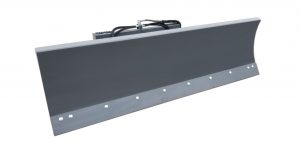
(615) 547-4033
Dozer Blades
Dozer blades, often simply referred to as “blades,” are versatile and essential attachments commonly found on bulldozers and other heavy construction equipment. These blades play a critical role in a wide range of earthmoving and land-shaping tasks. Here’s a summary of dozer blades:
- Design Variety: Dozer blades come in various designs and sizes to accommodate different applications. The two primary types are straight blades and angle blades. Straight blades are used for basic leveling and pushing tasks, while angle blades can be adjusted to various angles for more precise work, such as shaping roadways and slopes.
- Attachment to Heavy Equipment: Dozer blades are typically attached to bulldozers and similar heavy machinery. They are mounted at the front of the machine and can be raised, lowered, and angled using hydraulic controls.
- Earthmoving: Dozer blades are primarily used for earthmoving tasks, including leveling, grading, excavating, and pushing soil, rocks, debris, and other materials. They are indispensable on construction sites for creating level surfaces, digging trenches, and shaping landscapes.
- Snow Removal: Dozer blades are also used for snow removal in regions with heavy snowfall. The blade attachment can push or plow snow, making it a valuable tool for maintaining roads, parking lots, and runways during winter.
- Land Clearing: In forestry and land clearing operations, dozer blades are used to push aside vegetation, trees, and debris. This prepares the ground for further development or clears land for agricultural purposes.
- Precision Work: Angle blades, with their adjustable angles, are ideal for precise and controlled grading and shaping tasks. They can create slopes, ditches, and embankments with accuracy.
- Versatility: Beyond traditional construction applications, dozer blades are used in various industries, including mining, agriculture, and land development, where earthmoving and leveling are essential.
- Hydraulic Controls: Hydraulic systems enable operators to control the blade’s position and angle with precision, making adjustments on the go for optimal results.
- Safety: Dozer blades enhance safety on construction sites by allowing operators to move and shape materials efficiently, reducing the need for manual labor and the risk of accidents associated with heavy lifting and grading tasks.
- Maintenance: Routine maintenance is essential to keep dozer blades in optimal working condition. This includes blade edge replacement, hydraulic system checks, and inspections to ensure proper functioning.
